This post may contain affiliate links. Please read our disclosure policy.
Lu Rou Fan is a braised pork and rice bowl dish beloved in Taiwanese households. This healthier version uses lean pork shoulder instead of the traditional pork belly. It’s lighter but has the same rich, savory-sweet flavors I grew up with.
I also made a meal prep version inspired by CookUnity meal boxes! Slow-cooked until fork-tender with aromatic spices, it’s hands-off and perfect for busy weeks. Plus, it tastes even better the next day. For a ground pork version, try my Taiwanese Braised Minced Pork (Rou Zao Fan).
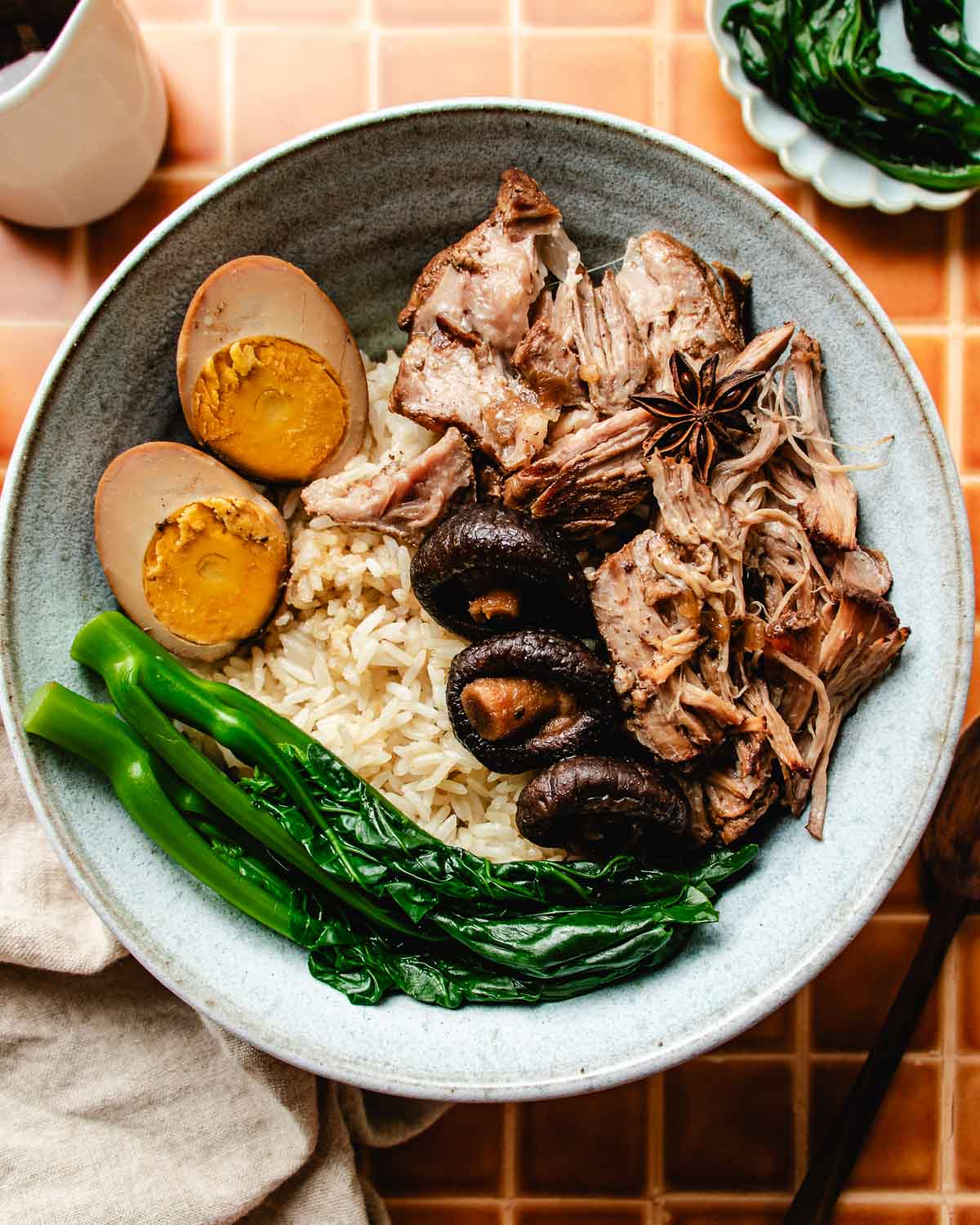
Table of Contents
What is lu rou fan?
Lu (stew) Rou (meat) Fan (rice), or Taiwanese Braised Pork Rice, is one of Taiwan’s most iconic comfort foods. Traditionally made with pork belly, it’s slow-braised in a savory, slightly sweet sauce with marinated eggs, called “Lu Dang” (滷蛋). Growing up in Taiwan, this dish was everywhere—every street vendor and night market had their own family recipe. It’s a staple so beloved you could eat it weekly and never tire of it.
In my version, I use leaner pork shoulder fried in shallot oil and braised with garlic, ginger, scallions, soy sauce, five-spice powder, brown sugar, and shiitake mushrooms. Cooking it in a slow cooker makes it easy, hands-off, and perfect for meal prep on busy days.
Ingredients
This beloved braised pork over rice dish uses flavorful aromatics and Asian pantry staples to build a rich sweet-savory flavor that deepens during the slow cook process.

- Dried Shiitake: Soaked overnight to rehydrate. Shitake has a deep umami flavor. Save the soak water to use as a stock!
- Hard-boiled eggs: Peeled and left whole, these eggs braise with the pork to absorb the broth’s flavors. Known as lu dan, they’re essential for an authentic dish.
- Shallot: Thinly sliced shallot is used to flavor the oil that we brown the pork in.
- Garlic Cloves: Smashed in whole
- Fresh Ginger: peeled and sliced into large thin pieces
- Scallion: Left whole with white parts smashed.
- Pork shoulder (aka pork butt): A lighter alternative to the traditional pork belly.
- Avocado oil
- Coarse Salt
- Five Spice Powder: Combines star anise, cloves, Chinese cinnamon, Sichuan pepper, and Fennel seeds for authentic Chinese flavor.
- Substitution: You can also use one piece of star anise to flavor the broth.
- Light Soy Sauce and Dark Soy Sauce: For umami flavor and rich color
- Oyster sauce: For added umami flavor and to slightly thicken the braising liquid.
- Substitution: Taiwanese thick soy sauce works too.
- Brown Sugar: To balance the rich flavors of this dish.
- Mushroom soaking liquid: Reserved to use as stock for braising the pork.
- Taiwanese michu: Just a splash to brighten the broth and remove the meaty aroma.
- Substitution: Gluten-free mirin, Chinese Shaoxing wine, or dry sherry
Why use pork shoulder?
Traditionally, braised pork rice is made with pork belly because it’s rich, fatty, and creates that melt-in-your-mouth texture after long braising. While delicious, pork belly can feel a bit heavy. If you’re like me and prefer a slightly leaner and cleaner taste, pork shoulder is a great protein alternative.
How to make Taiwanese lu rou fan
This braised pork with lu dan is a Taiwanese classic, beloved for its rich flavors and comforting charm. Traditionally, it’s made with pork belly slow-cooked on the stovetop. For this lighter take, we’ll cook the pork shoulder in the slow cooker—it’s hands-off and results in beautifully tender pork shoulder.

- Ingredient prep: Rehydrate your dried shiitake overnight and reserve the soaking water to use as stock. Boil and peel the eggs. Prepare the shallot, garlic, ginger, and scallion.
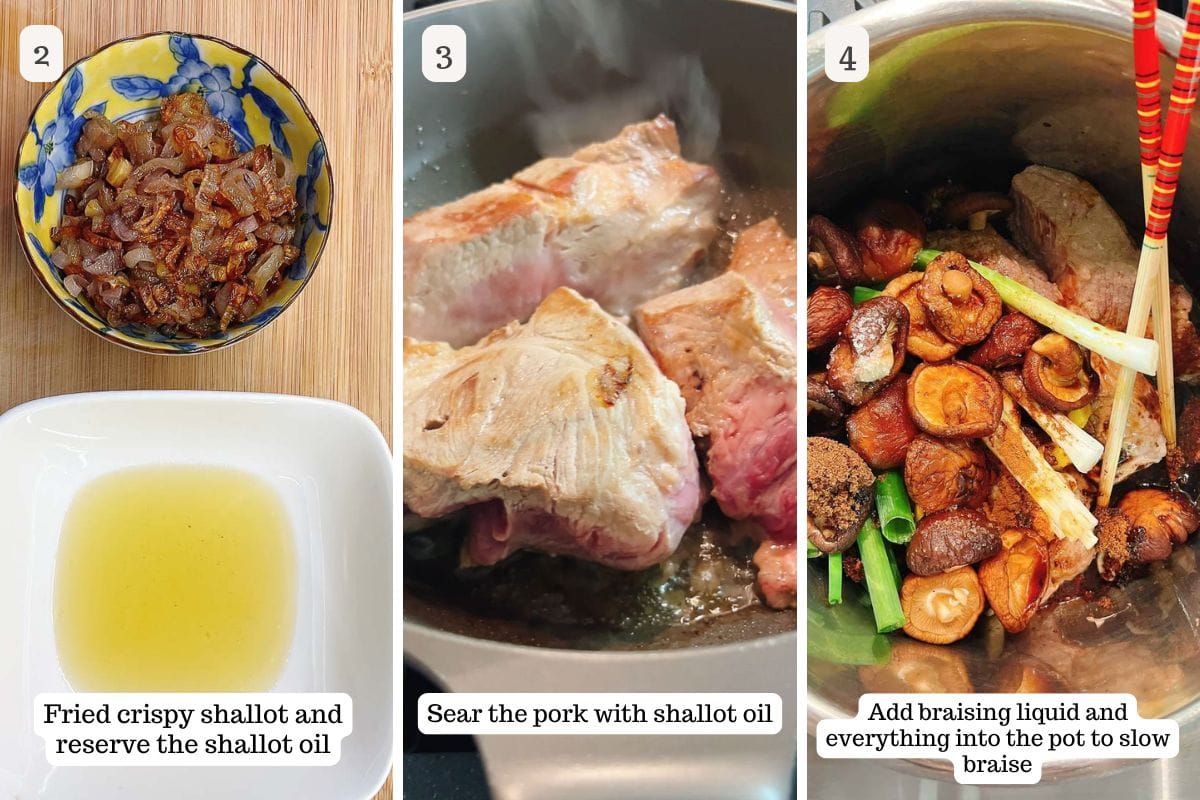
- Crispy shallots and shallot oil: Add the oil and shallot to a large pan or wok. Fy over medium heat until they turn light golden brown. Strain the fried shallots and the oil through a sieve.
- Sear pork with shallot oil: Sear the pork in a single layer in the pan over medium to medium-high heat for 4 minutes on one side and 3 minutes on the flip side.
- Slow cook: Transfer the pork along with the oil and pan juice into the slow cooker. Add the fried shallot and all remaining ingredients, stirring to submerge them in the braising liquid. Close the lid and slow cook on low for 8 hours or high for 6 hours.
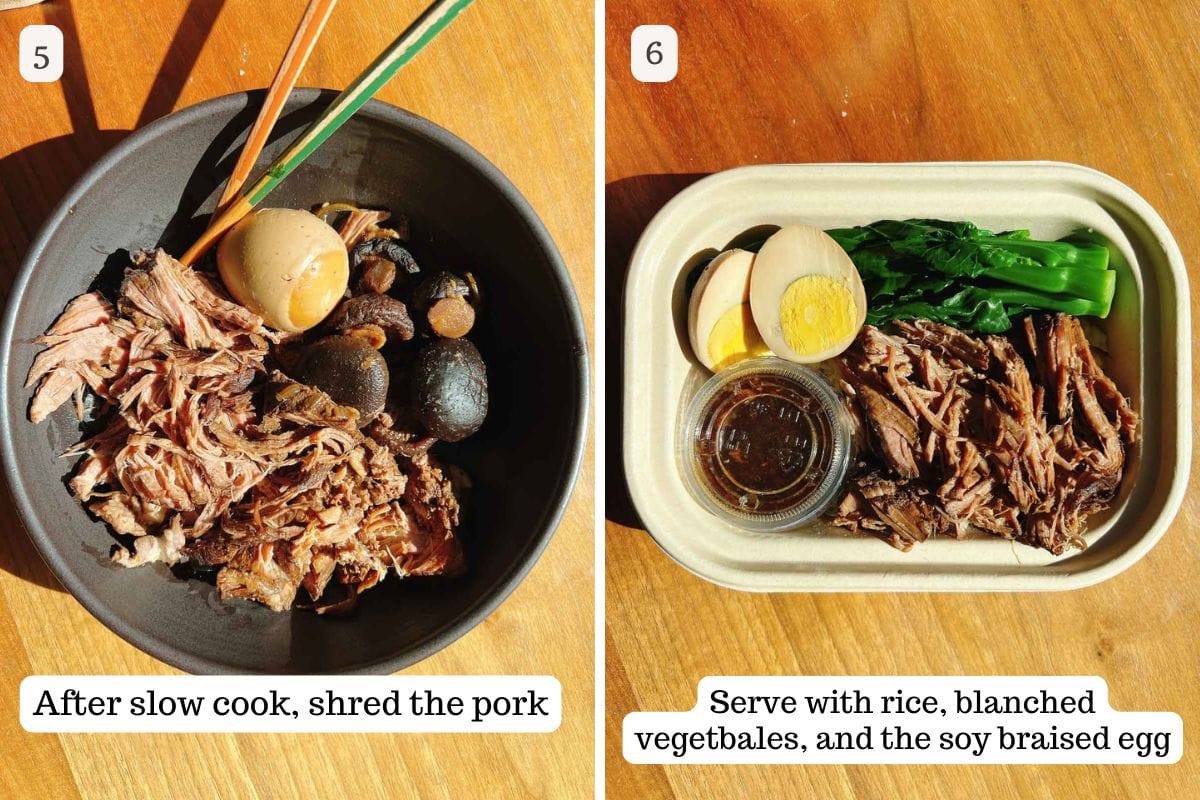
- Shred the pork: After braising, the pork should be fork tender and you can easily shred it with a fork before serving.
- To serve: Add rice to a serving bowl. Top with a few large spoonfuls of the shredded pork with braising liquid. Halve the egg and garnish with vegetables on the side. Serve hot.
Question
Can I pressure cook it?
I recommend using a slow cooker for this dish because pork shoulder is leaner than pork belly. Slow braising is the best way to make the meat tender and soak up all the delicious flavors. The flavor won’t come out as fragrant if using a pressure cooker.
How it’s served in Taiwan
This comforting meal was a staple in my household growing up in Taiwan. It’s traditionally served with steamed white rice, lu dan (braised eggs), and a blanched vegetable (often blanched yu choy, napa cabbage, bok choy, or baby Chinese broccoli ). Here are some tasty options you can try:
- Rice: Start with rice cooker white rice or simple air fryer rice as your base.
- Pickles: Top with Asian pickled cucumbers or pickled daikon for a tangy-crunchy bite.
- Greens: Sautéed veggies like my Chinese mustard greens stir-fry, yu choy with garlic sauce, sauteed Taiwanese cabbage, or braised tofu are perfect on the side.
- Soup: For a family-style meal, serve alongside a comforting soup, like my savory daikon soup or this easy napa cabbage egg drop soup. Perfect for winter months!
Meal prep version
This recipe was inspired by CookUnity’s heat-and-eat meal boxes! It makes six servings per batch and is perfect for meal prep. Here are some meal prep tips for this dish:

- Prep ingredients ahead: Boil your eggs and rehydrate the shitake mushrooms the day before cooking to keep things simple.
- Cook the whole dish: Follow the recipe to braise your pork.
- Concentrate the sauce for meal boxes: Once you’ve cooked and cooled the dish, portion out individual servings of rice, shredded pork, and veggies in airtight containers. Cook down extra braising liquid and thicken with a slurry—pour the sauce into a small plastic sauce container and add to the boxes.
- Freezing: Store your prepped boxes in the freezer for up to 3 months. Thaw in the fridge for 24 hours before reheating.
- Reheating: Scoop off any solidified fat before reheating on the stovetop or in the microwave.
ChihYu’s helpful notes
- Rehydrating Shiitake Mushrooms: Soak the dried mushrooms overnight and save the soaking liquid to use as stock. This deepens the umami flavor that defines the dish.
- Avoid Lifting the Lid: Resist the urge to check on the slow cooker while it’s working. Each time you lift the lid, you lose heat and prolong cooking time.
- Leftover Braising Liquid: Use extra braising liquid to make a simple soup! Add your favorite veggies, like yu choy or bok choy, and Chinese noodles for a noodle soup.
- Meal prep version: Thicken the braising sauce on the stovetop and pour it into a separate sauce cup. Drizzle the sauce over the dish before reheating and serving.
FAQs
Rou Zao Fan is made with minced or ground pork that’s stir-fried and then simmered in a braising liquid, giving it a lighter texture and thinner sauce. Hong Shao Rou is made with big chunks of pork belly braised in a sweet soy sauce until sticky and caramelized. It’s usually served as a main dish. Lu Rou Fan, uses diced pork belly, slow-braised for a richer, thicker, and more intense flavor.
More Taiwanese recipes
If you loved this pork and rice dish, be sure to give some of my other Taiwanese recipes a try—just like my mom used to make!
- Taiwanese beef noodle soup is a comforting and aromatic Taiwanese stew made with beef shank chuck roast.
- Asian cucumber salad is a refreshing Taiwanese side inspired by the popular Din Tai Fung dish.
- Shanghai rice cake with napa cabbage and bok choy is a savory one-pan meal with chewy rice cakes, shitake, sweet napa cabbage, and crispy baby bok choy.
- Dan Bing are Taiwanese breakfast egg crepes that are chewy, crispy, cheesy, and drizzled with a sweet-savory sauce.
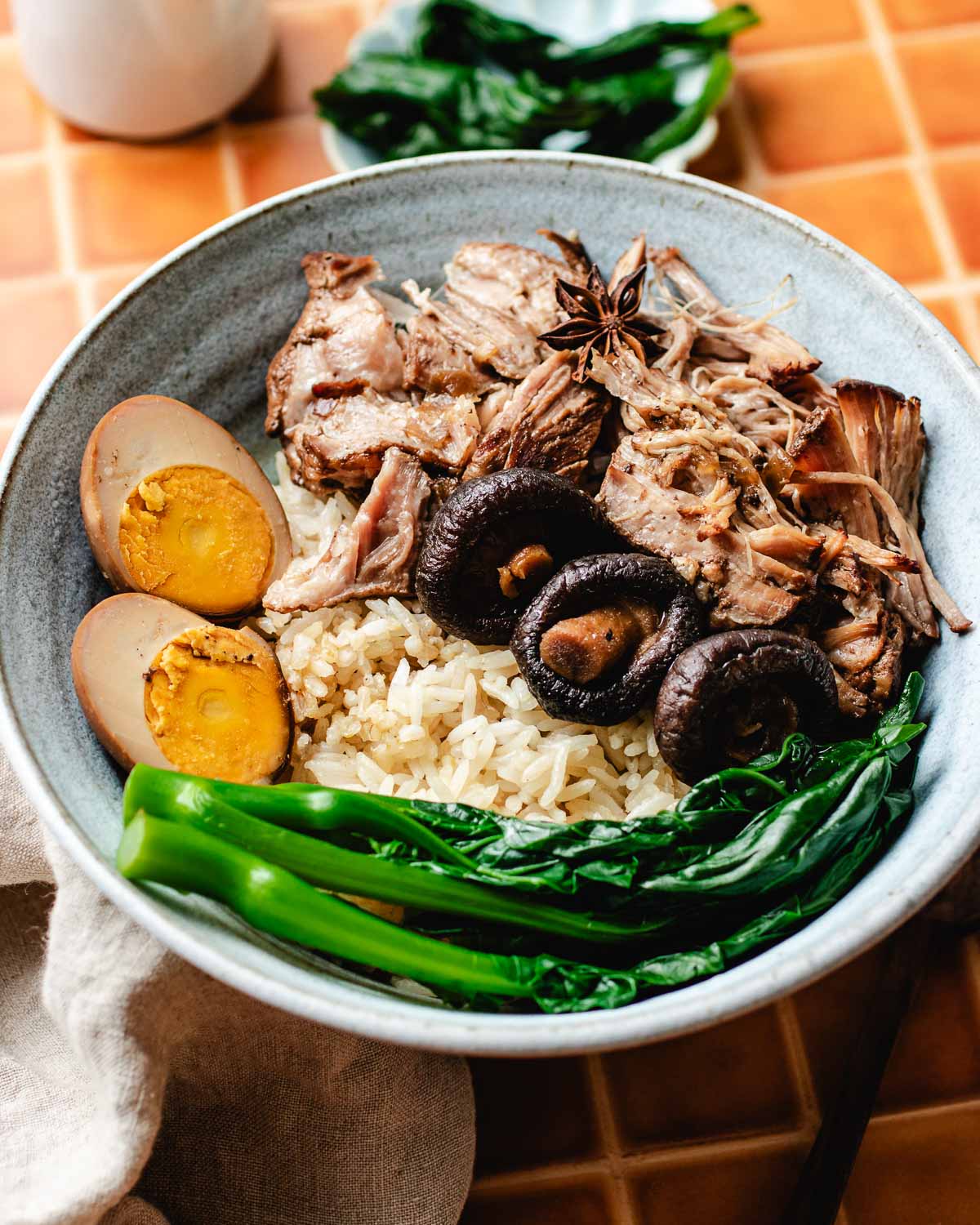
Lu rou fan recipe (slow braised pork over rice)
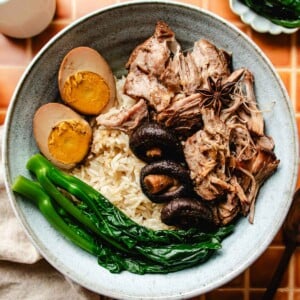
Video
Ingredients
- 2 oz dried shiitake 5 large caps or 8-9 medium caps
- 8 large eggs hard boiled and peeled
- 6 oz shallot thin slice to rounds, 3 large
- 1.2 oz garlic cloves smashed in whole, 6 large
- 0.75 oz ginger peeled and slice to large thin pieces
- 3 bulb scallion leave in whole with white parts smashed
- 2.5 lb pork shoulder aka pork butt
- 4 tbsp avocado oil
- 1 tsp coarse salt
- 1 tsp five spice powder
- ½ cup light soy sauce
- 1 tbsp dark soy sauce
- 2 tbsp oyster sauce or Taiwanese thick soy sauce
- 3 tbsp brown sugar
- 3 cup mushroom soaking liquid stock for braising
- A splash Taiwanese michu gluten-free mirin, Chinese shaoxing wine, or dry sherry
Serving suggestions:
- Steamed white rice
- Blanched yu choy bok choy, or baby Chinese broccoli
Instructions
Prep:
- To rehydrate the dry shiitake, in a large bowl, soak the mushrooms in room temperature water overnight or at least 6 hours. The bowl should be large enough to hold 5 cups of water. Loosely cover the bowl and set aside in a cool and shaded spot. After that, wring out the mushroom, strain and save the mushroom soaking liquid to use as stock. Slice the mushrooms into strips. See our How to cook dried shiitake mushrooms for more details.
- Others: Prepare the hard boiled eggs, peel and set them aside ready to use. Thin slice the shallot to rounds and set aside in one bowl. Prepare the garlic, ginger, and scallions on a separate plate.
- Pork: Slice the pork into large chunks, about 3-4 large pieces.
Crispy shallot and shallot oil:
- In a large wok or deep sauteing pan (that can hold at least 6 cups of liquid and with a lid to cover), start the pan cold without preheating it. Add the oil and shallot and fry over medium-heat, stirring periodically until they turn light golden brown, about 10 minutes.
- Strain the shallot and the oil through a sieve to separate the two. Set the shallot aside in a separate bowl and return the oil back to the pan. We’ll use this oil to sear the pork, creating the signature flavor of Taiwanese lu rou fan.
Sear pork with shallot oil:
- Preheat the pan over medium heat until it feels warm. Sear the pork in a single layer without touching over medium to medium-high heat for 4 minutes first side and 3 minutes flip side. Turn off the heat.
Slow cooker
- Transfer the pork along with the oil and pan juice into the slow cooker inner pot. Add the fried shallot, garlic, ginger, five spice powder, light and dark soy sauces, oyster sauce, brown sugar, mushroom soaking liquid, eggs, cooking wine, and whole scallions folded in half to fit into the pot. Gently stir and press to submerge the aromatics and the eggs under the liquid.
- Close the lid and slow cook on low for 8 hours or high for 6 hours. Do not open the lid during cooking or the heat escapes, and it can take 20-30 minutes for the slow cooker to return to the proper temperature.
Final touch:
- After braising, the pork should be fork tender and you can easily shred it with a fork. Shred them before serving.
To serve:
- Add the rice to the serving bowl, top with a few large spoonfuls of the shredded meat with braising liquid. Halve the egg and garnish with the vegetable on the side. Serve hot.
To pack for lunch boxes (cookunity-inspired!):
- Separate the pork from the braising liquid. You can thicken the braising liquid in a separate pot with a touch of slurry and pack it in a separate sauce container. Store the meal box in the fridge up to 2 to 3 days ahead. To reheat, pour the sauce over, lightly stir and mix, microwave for 1 minute, stir, and microwave again until warmed through.
Notes
- Make-Ahead: The meat sauce and marinated eggs taste even better the next day.
- Preparation: Rehydrate the shiitake mushrooms overnight and boil and peel the eggs in advance to streamline the process.
- Braising Liquid: The braising liquid is thin but packed with savory, sweet, and earthy flavors.
- Extra Flavor: Add a piece of star anise to the pot for a stronger flavor.
- Aromatics: You can leave the aromatics in the pot or discard them after braising. They become soft and edible.
- Storage: Store in an airtight container in the fridge for 4-5 days.
- Freeze: Divide it into smaller serving portions and store in freezer friendly containers for up to 3 months. Defrost 24 hours in advance in the fridge before reheating.
- Reheating: Scoop off any solidified fat before reheating on the stovetop or in the microwave.
- Leftover Braising Liquid: Use the flavorful braising liquid to make soup with bok choy, napa cabbage, or add boiled noodles for noodle soup.
Nutrition
Nutrition information is automatically calculated, so should only be used as an approximation.
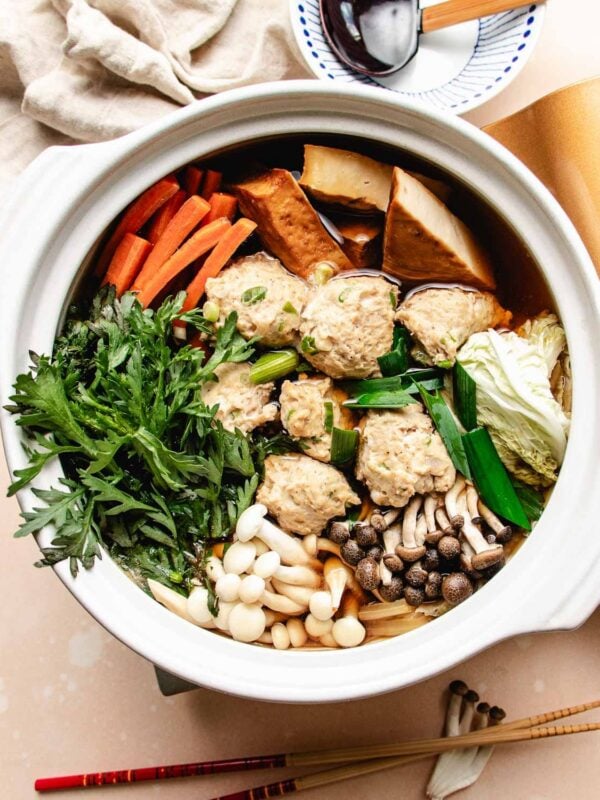
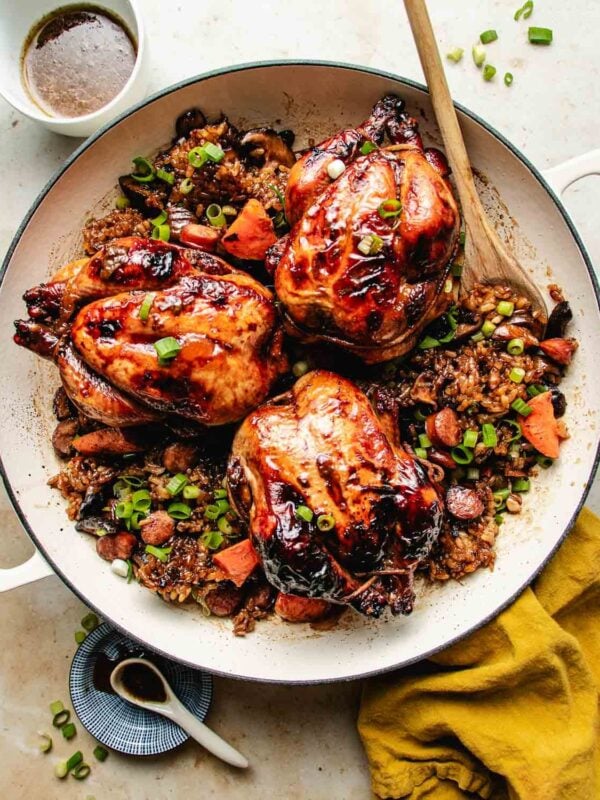
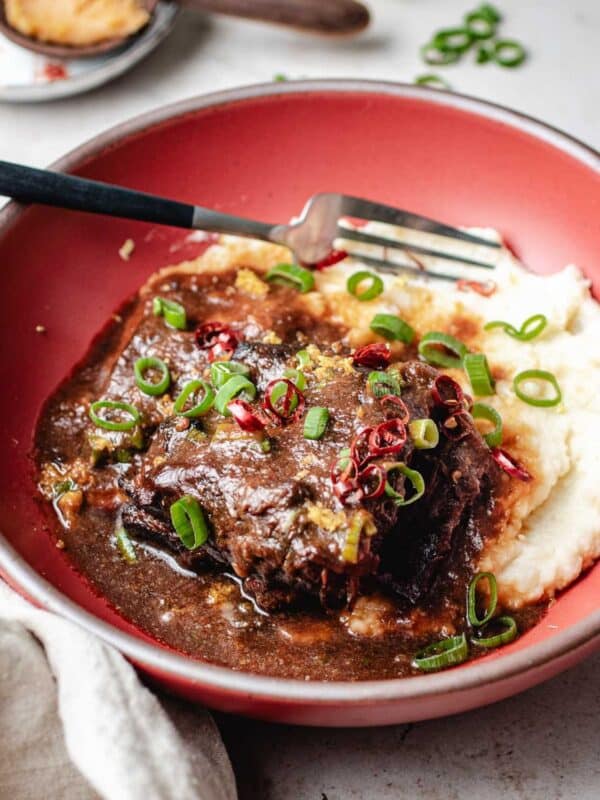
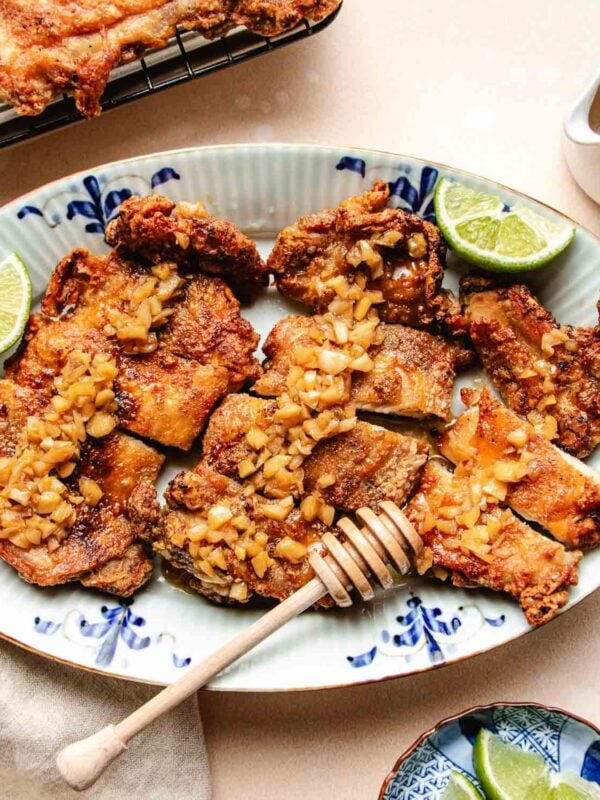









Finally….! I tried the Ru Lou Fan recipe. It was delicious and easy to make. Practically dump and walk away. I don’t have a slow cooker, so I did it in my Instant Pot that has a ‘slow cook’ option. Put it on high (‘more’ in my case) and 6 hours later – done. I’m too lazy to fry the shallots, instead i used pre-fried shallots haha.. The other thing I added was half a cube of chicken stock and 1 star anise as suggested. It turned out very good. The meat is so tender and flavour. This will be my goto recipe.
Wonderful and thank you for sharing your workaround method with us!
My husband is from Taiwan and he said this dish tastes authentic and the lu dan eggs are delicious! I love that it’s made with leaner meat so easier on the stomach and the kids love it, too!
That’s wonderful. Thank you so much!